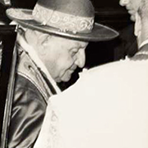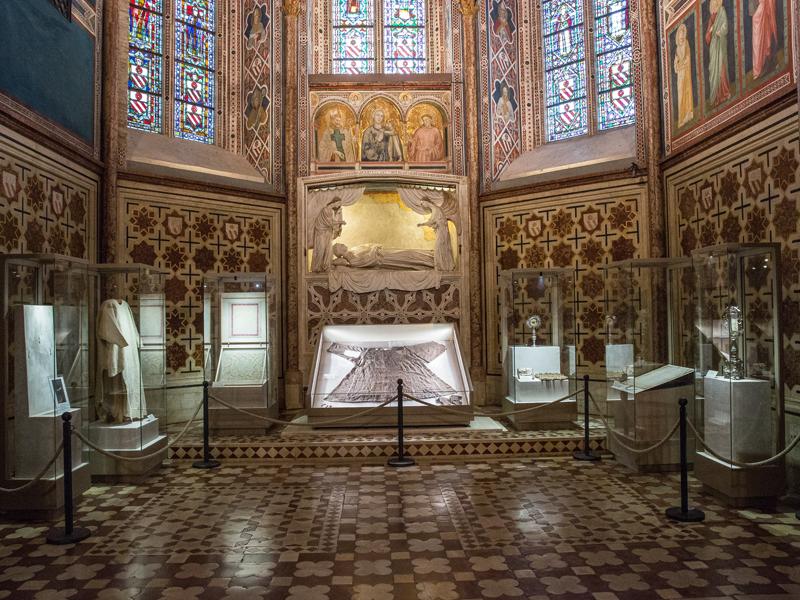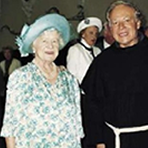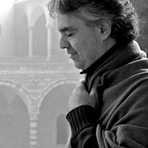Le visite dei pontefici


What the Son of God leaves for us, naked on the cross; and what Francis leaves for us naked on earth
The tunic and the habit. The tunic of Jesus, the habit of Francis. The red and the brown. It is that study rediscovered, with an interesting discovery…
What do these two tunics have in common?
I am reminded of the text of a dear friend, Emilio Isgrò, “What remains of God”. A statement that gives us a summary of these two “rags”. What the Son of God leaves us naked on the cross, and what Francis leaves us naked on earth. The color red which recalls passion, love for others; brown which recalls the poverty of the earth and the fragility of man. It is a game of contrasts. If you like, it is the serious game of God and the serious game of Francis. The two tunics on the cover that were created and donated by the imagination of one of the most famous artists, Mimmo Paladino, represent what we are called to be and live. Not two “rags”, but two men who wore those rags and lived in them. They make us perceive the beauty of love, which was given to us and the dignity of the man called to patch and mend.
The first is the tunic which, as the evangelist John reminds us (John 19, 23), was woven all in one piece, without seams, from top to bottom, and drawn by lots at the moment of death. Together we wonder what all this means.
Woven all in one piece because Jesus is entirely united with his Father and with us; we cannot therefore find our unity among us and in ourselves except in Him, He is as Anne Lécu writes, “the name of our inner unity, the name of the bond that unites us. And He does not stop praying to his Father for unity to be recognized, received and given.”
The tunic of Jesus was without seams, if we think of Adam and Eve, of Job, they had leaves or fabric that they had braided and sewn together. The tunic, on the other hand, is not conceivably torn because the image and the resemblance that it has impressed upon us cannot be torn, it is stainless and incorruptible. It is the image of God in us.
Being seamless is the metaphor of God’s mercy that comes to cover what masked our innocence; it restores our original likeness to God. It is the skin of our innermost being. This skin, writes Lécu, “is without tears or scratches despite all the misfortunes of the world, even if it is cluttered with debris. It gives us the truth of our being.”
Finally, this tunic is woven from top to bottom, from head to feet, it is our Father who gives it to us, a sign that unity comes from above, it is a gift from God. One is reborn from above; one is born from above, as Jesus said to Nicodemus.
Finally, it is drawn by lots; it does not belong to anyone because it belongs to everyone. It is not part of the soldiers’ booty. It replaces the belt woven by Adam, it covers Jacob, so that his skin recovers its previous health, it comes to cover all the raped Tamar, the naked Noah, the sick Job, all the young people fleeing naked, desperate for the capture of their Lord, for their “security”. It comes to dress Peter and each of us so that we can present ourselves worthy and dignified before God, before every man. Drawn by lots during death because that death is the victory of love and of mercy. Moreover, this tunic was left to us by the naked Christ on the cross, the moment that reminds us that everything passes…
If Christ’s tunic becomes the metaphor of God’s love, Francis’ habit is the metaphor of the fragility of man. What does it remind us of? But I must tell you, dear friends, that with trepidation beginning this research, I "discovered" something unimaginable, parked for many years, without anyone knowing anything about it, on the shelves of the library and in the issues of our magazine. Those patches, those patches on St. Francis’ habit and I counted 31 in all, were sewn – as stated by Mechthild Flury-Lemberg, one of the most important scholars of ancient fabrics. - by Saint Clare, with two hypotheses: first during the very life of St. Francis and second after his death, to preserve the Saint’s habit with devotion.
But let’s proceed with order. A single habit: “In no case did [Francis] admit that the friars could have more than two habits, but he conceded they could be mended with patches. He said that he was horrified by elegant fabrics, and he roughly reproached those who did the opposite. To inspire them with this example, he always had pieces of coarse sack sewn into his habit. And, as he was dying, he commanded that the funeral habit should be covered with sack” (FF 1698). Francis understands that men and women are worth what they are worth before God and nothing more, to indicate the dignity and the importance of the human being, the value that they have in their eyes. A person who, beyond what he/she is or does, whether rich or poor, big or small, male or female, young or old, upright or a sinner, all are important in the eyes of God, just like the leper, the sultan, the brother thief: thus Francis calls sinners discovered in flagrante delicto.
We counted 31 patches on the habit, of which 19 were sewn from the cloak of Saint Clare. Here too there is a strong symbolism. They indicate the laceration and the limit that everyone inevitably brings with them, inexorably. The rips have been sewn, or sewn together, and here is the “discovery” that I could not have imagined, from the cloak of Saint Clare which tells us about the devotion, esteem and spiritual affection of one person for another, but in this case, it is Clare’s for Francis. Only love can mend, it allows us to reconcile and start again. A love that Felice Accrocca, one of the leading experts and scholars of Franciscanism, calls “free and intense”.
What keeps a habit alive? A person? If it is not understanding, charity, the ability to mend with another, otherwise we are all called to be thrown away because we are not loved.
The brown and grey color of the natural fabric of the habit is the image of the earth. Not just the humus where we place our feet; the earth that the habit recalls is the intrinsic capacity that each person has to generate life: it is the task of our Mother Earth, and of each of us; perhaps we can also understand why Laudato Si’ is animated with Franciscanism.
When does our inner unity come together? When is fraternity born? When do you live your relationship with others? Only when you are able to generate life.
Jesus’ tunic and Francis’ habit, what remains of God, which we are called to wear, as long as the clothes become skin, before, as Isgrò writes, “it may be late for me, it may be late for you but not for life”.
I can only conclude with the verses by Alda Merini, which tell of the concreteness of these “rags”: Happy the one / who dressed me in a habit / which became a floor of roses. / I never felt /the harshness of this fabric, / but it smelled fresh, / it smelled of morning, / it smelled of resurrection. / My shoulders have become weak but strong: / I have become a peasant of faith. / I tilled only the land of God, his will.
(reference texts : Anne Anne Lécu, Hai coperto la mia vergogna (You covered my shame), Cinisello Balsamo (MI), San Paolo, 2019; Emilio Isgrò, Quel che resta di Dio (What remains of God), Milano, Guanda, 2019; Mechthild Flury-Lemberg, La tonaca di San Francesco (the Habit of St. Francis), in San Francesco Patrono d'Italia (St. Francis Patron Saint of Italy) n.2 February 1989 and Mechthild Flury-Lemberg, Textilkonservierung, Abegg-Stiftung Bern, Schriften der Abegg-Stiftung Bern, 1988 )
Cari amici la rivista San Francesco e il sito sanfrancesco.org sono da sempre il megafono dei messaggi di Francesco, la voce della grande famiglia francescana di cui fate parte.
Solo grazie al vostro sostegno e alla vostra vicinanza riusciremo ad essere il vostro punto di riferimento. Un piccolo gesto che per noi vale tanto, basta anche 1 solo euro. DONA


